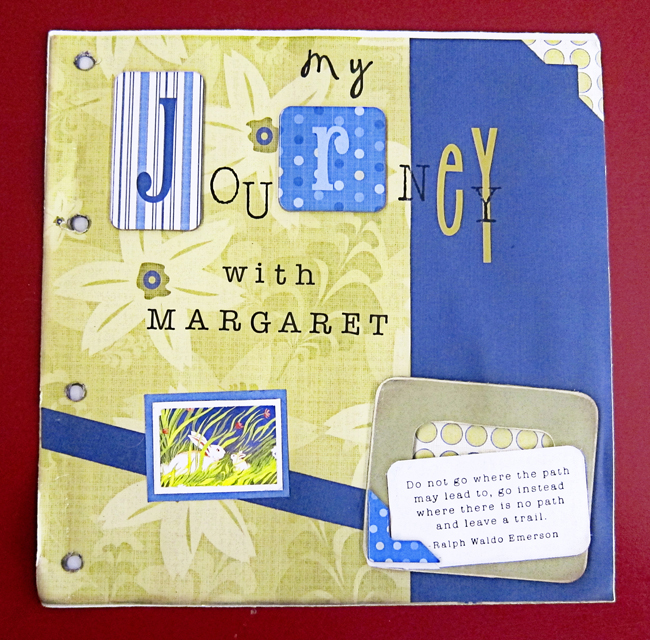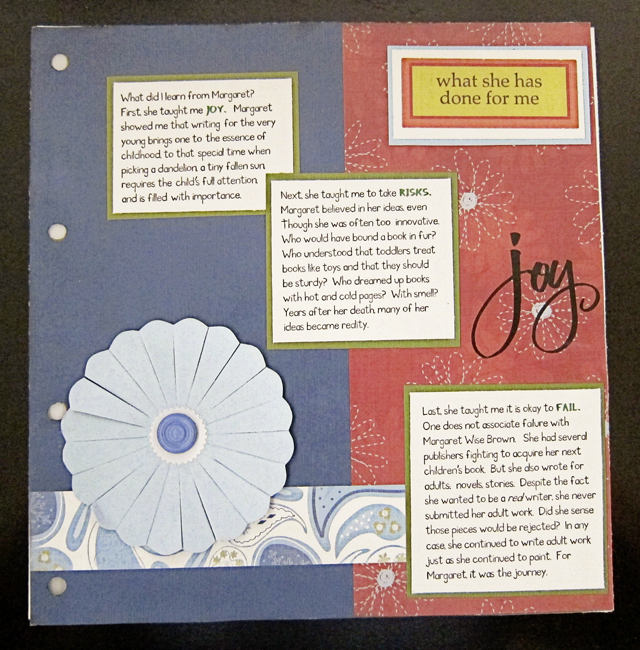In August 2016, I traveled to Vinalhaven Island off the coast of Maine to participate in a week-long festival honoring former resident Margaret Wise Brown. I gave an evening talk, and, most fun of all, led a workshop in which attendees penned poetry and even a picture book in Margaret’s lyrical style. Back home again, I wrote about my island experience and my personal connection to Margaret in a Knock Knock essay published last August.
I’d been working on a picture book biography of MWB for thirteen years, researching, writing, revising, traveling, submitting, getting rejected, revising, revising, revising. I’d gone through every stage in the writing process: full steam ahead, tacking to keep my sails filled, sitting in dead calm, and finally, a busted rudder.
At what point do we give up on a manuscript? How many rejections do we collect before we consider the book a failure?
Planning the trip to Maine, I knew Margaret and I were so over. I still loved and admired her, but I needed to put this project in drydock. I’d told her story from several points of view—Margaret herself, her dog, her potted plant, and even her books. None of them worked. Yet as I was packing T-shirts and sunscreen, I decided to revise one more time.
On Vinalhaven, I ate lobster and ice cream, read, stared at the water, and scribbled in a notebook. I’d deliberately left research materials at home, bringing only the last version of my manuscript and Leonard Marcus’s Margaret Wise Brown: Awakened by the Moon. But a new “way in” eluded me. While touring Margaret’s summer home, Only House, I watched a sailboat arrow down the bay. Margaret wrote that way, forward-moving, effortless as a feather. Why couldn’t I?
One morning at a read-aloud event, an elderly man recounted a surprising anecdote about Margaret. I laughed and said to myself, “Only Margaret!” Suddenly I was windward again.
I spent September writing the new version of my book, then sent it off to my agent who declared it “Gorgeous!” She was the only one who felt that way, it seemed. Rejections poured in. Some editors asked me to revise heavily. One editor, who’d seen a version of the manuscript years before, advised me to return to the style she’d rejected in 2008!
The calendar changed. Fourteen years on a single project. Did I waste all that time? No. My journey with Margaret has been priceless. I learned more about an incredibly influential writer . . . and about myself.
One afternoon this past May, my agent called. She asked if I was sitting down. I was deep in work and barely paying attention when she said, “We have an offer on Margaret.” What?!? I had to lie down. Kathleen Merz of Eerdmans Books for Young Readers wanted to acquire my manuscript, “Only Margaret: A Story about Margaret Wise Brown.”
At first, the news felt like finally being able to stop hitting myself in the head with a hammer. Then it seemed like a dream. Did I really get that call?
Yep.
At what point do we give up on a project? When do we quit revising? Those are questions only we can answer. I’m glad I tried once more. I can’t wait to work with my editor on “Only Margaret,” to have fresh wind at my back, and expert direction.
Photos: top – taken from Margaret’s Only House; middle, bottom – from a scrapbook I made in 2005.
Save
Save
Save
Save
Save
Save



4 thoughts on “Windward into Revision”
I can’t wait to see it! 🙂 e
Me, too! I can’t wait to see your PhD thesis. Go, girl!
CC (Congratulations Candice!)
The truth is in this essay. We can say that it’s over. But nothing is every truly over. The fire will die down and what remains is an ember. Something of that first spark holds on.
Well said, Melissa. In picking subjects to write about, it’s hard to know how long the passion will last over the long haul of researching, writing, and submitting. We have to devise a sort of litmus test.